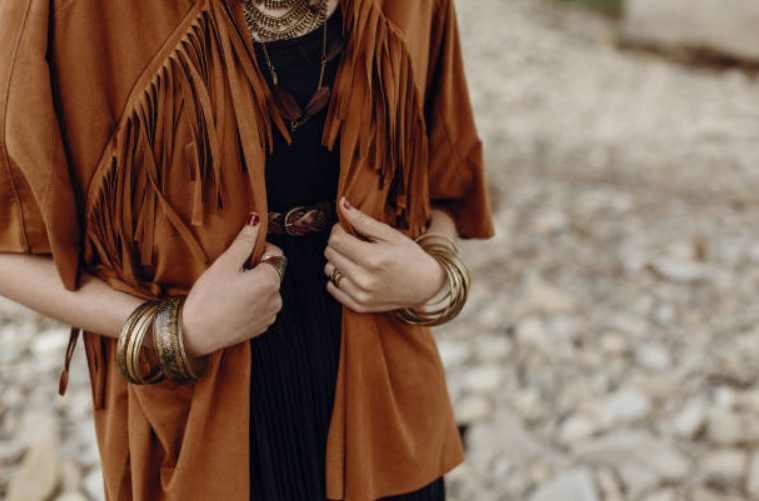Emotions, ideas, and social impressions are all significantly influenced by color. Color is more than only an aesthetic component in Pakistani design, especially in Eastern attire; it is a cultural language. Eastern clothing uses color to express deep emotional and historical significance, unlike western wear that follows global trends. Colors are deeply meaningful in Eastern attire, from luxurious velvet shawls to vibrant bridal lehengaz. Understanding the role of color helps explain the common shades worn for events and seasons in Pakistani wardrobes.
Red: The Symbol of Celebration and Power
Red has traditionally been connected to power, passion, and happiness in Pakistan. It represents love, wealth, and fresh starts and is customarily worn by brides. Red is used to refer to a psychological influence by evoking strong emotions and gaining attention. For this reason, deep hues of bright crimson, maroon, or scarlet color are found almost everywhere in Pakistani wedding bridal dresses, mainly lehengas, ghararas and elaborately embroidered shararas.
White: Purity, Peace, and Spirituality
White holds a unique place in Pakistani culture. It produces psychological sensations of serenity, simplicity, and spiritual congruence. White cotton kurtas with basic embroidery encourage sentiments of serene elegance when worn for daily use, particularly by ladies. Because white reflects heat and has a cooling impact on the body and mind, traditional clothing is usually a summertime item. White is used to highlight reverence and humility during religious events like funerals and Eid.
Black: Elegance with a Hint of Mystery
Black in Pakistani Eastern wear represents sophistication, authority, and depth. It is frequently used in Pakistan for formal gatherings, feasts, and evening events. Black is attractive because it may create drama and make the form appear leaner. It evokes mystery and seriousness while allowing intricate embellishments – such as silver zari or colorful threadwork – to stand out more vividly.
Yellow and Mustard: Joy, Energy, and Optimism
Yellow holds festive value in Pakistani tradition, especially in pre-wedding events like mayun and haldi. This color psychologically triggers happiness and vitality. Bright yellow and mustard colors are worn in spring and summer. These colors are linked to sunshine and growth. In Pakistani culture, yellow is also connected to traditional festivals like Basant, where it represents celebration and changing seasons.
Green: Harmony, Fertility, and Faith
Green has profound psychological and religious relevance in Pakistan. Islam uses green as a hue to represent harmony, wealth, and faith. Eastern clothing typically has green kurtas and dupattas, particularly for religious holidays and occasions. On a psychological level, green promotes renewal and equilibrium. Green clothing and accessories, such as emerald silks and pastel mint chiffons, express sentiments of healing, growth, and solidarity.
Blue: Calmness and Authority
Particularly for formal and semi-formal clothing, blue has been one of the most prominent hues in Pakistan’s Eastern fashion lines. Blue represents peace, loyalty, and trust. Men’s waistcoats and kurta shalwars are the most common items made in navy blue because of their respectable aspect. More subdued blues, such as sky blue or teal, give summertime lawn and chiffon ensembles a pleasant hint or sweetened touch.
Pink: Femininity, Romance, and Softness
In Pakistani dresses pink is mostly considered feminine and sugary. It is a standard color of engagement ceremony and young girls. Pink has a registration impact because it is nurturing and consoling. Pink Dusty rose is the color of romance and elegance in Pakistani Eastern dressing, particularly with light lace work or touch of sequins.
Orange and Coral: Creativity and Warmth
The colors orange display connotation of warmth, originality and zeal. The Pakistani culture also practiced a lot of use of the orange color in fusion or celebratory attire due to its bright and youthful attributes. Even calmer shade of orange, coral, is more common in the summer and transitional wardrobes as it, just like orange, is calming and boosting at the same time. Coral and orange color shades psychologically inspire you more. This shade can be used during the daytime parties and mehndi nights.
Cultural Fusion and the Modern Palette
The current Eastern dressing in Pakistan can be defined as a synthesis between the past psychological thinking and current trends. Pastel colors, once strictly the domain of summer, are being worn on wedding gowns and rich jewel tones are found on the runway in formal ready-to-wear. The designers who often resort to the new combinations to find such a balance between keeping up with the changes in the season and creating something with a psychological appeal are Maria B, Sana Safinaz, and Elan. As fashion is changing, the emotional and cultural desire to tell a story through color in Pakistani Eastern wear still has traditional concepts and emotional connection to the culture.
Women’s Sleeveless Tee Shirts The Versatile Wardrobe Staple
Conclusion
The psychological psychology of color in Pakistani Eastern clothing is purposeful and very symbolic. Each color selection, whether striking or understated, captures the spirit of the wearer, the event, and underlying cultural ideals. The emotional and psychological effects of color will continue to advise designers and users alike in expressing individuality, tradition, and style via each ensemble, even as fashion trends change.
